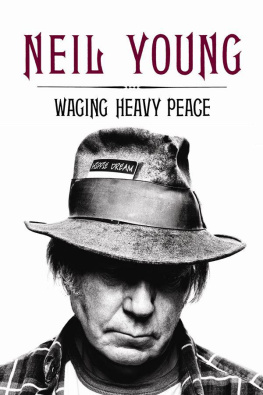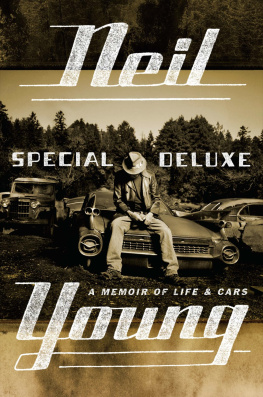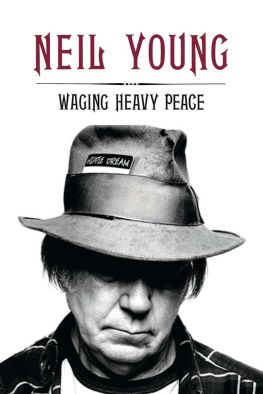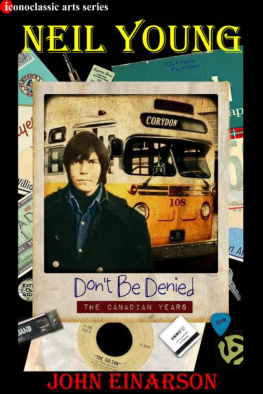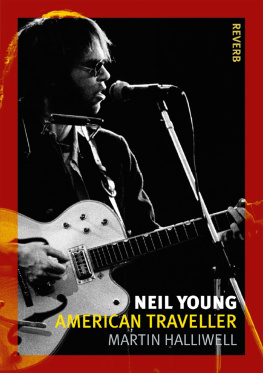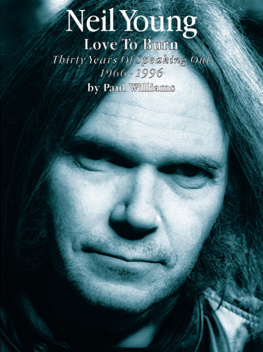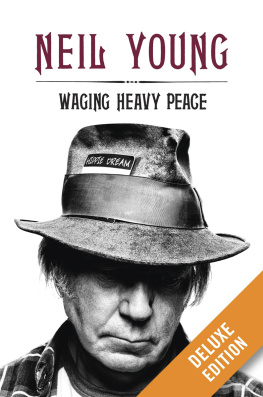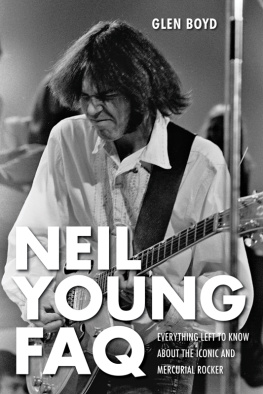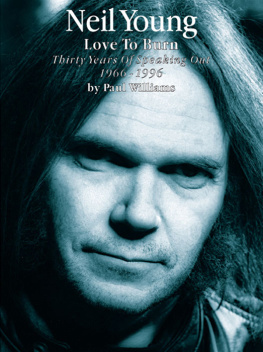Neil Youngs music and songwriting which span forty years and thirty-four studio albums of rock and roll, folk and country, with shadings of blues, techno and other styles are among the most enduring and popular in modern times. From his early days with Buffalo Springfield, and his solo career and collaborations with Crosby, Stills & Nash, Crazy Horse and dozens of other notable musicians and groups, Young is acclaimed for both his musical talents and his artistic integrity. With a major hit in every decade since the sixties, he was inducted into the Rock and Roll Hall of Fame twice (as a solo artist in 1995 and as a member of Buffalo Springfield in 1997). A well-known political activist, environmentalist and philanthropist, Young has been involved in several causes, notably co-founding Farm Aid and The Bridge School, which assists children with physical impairments and communication needs.

Driving the Jensen at the ranch, 1988.
Preface
When I was young, I never dreamed of this. I dreamed of colors and falling, among other things.
Chapter One
BROKEN ARROW RANCH, SPRING 2011
The Young Family
Father Neil, Mother Pegi,
Children Amber and Ben
I pulled back the plastic sticky tape from the cardboard box. Wrapping paper was on the ground around my feet. Ben watched from his chair, and Amber and Pegi sat around me. I carefully lifted the heavy weight out of the box. It was further wrapped in packing paper and then a final layer of some foamy quarter-inch-thick protective material. Then it was revealed: a locomotive switcher with handmade Lionel markings. Curiously, it was not a real Lionel. It must have been some kind of prototype. There was a white typewritten sheet in the box from Lenny Carparelli, one of the endless stream of Italian-Americans connected in one way or another to the history of Lionel, a company I still have a small share of. I read the sheet. The model was from General Models Corporation. It was a beautiful switcher, and it was indeed the prototype that Lionel had used to create its own model. As the letter pointed out, this happened back in the days before corporate lawsuits and trade secrets invaded every little area of creativity and design.
Pegi always gives me Lionel collectibles for holidays, and I now have a very extensive collection of rarities, all proudly displayed behind glass in a room with a giant train layout. It is not a normal train layout: The scenery is made up of redwood stumps for mountains and moss for grassy fields. The railroad has fallen on hard times. A drought has ensued. Track work, once accomplished by hardworking teams of Chinese laborers, has been left dormant. Now expensive, highly detailed Lionel steam engines from China traverse the tracks. My railroad is historic in its own way as the site of many electronic development programs where the Lionel command control and sound systems were conceived and built from scratch; then the prototypes were tested and the software was written, tested, rewritten, and retested. Heady stuff, this electronics development. It all started with Ben Young.
Ben was born a quadriplegic, and I was just getting back into trains at the time, reintroducing myself to a pastime I had enjoyed as a child. Sharing the building of the layout together was one of our happiest times. He was still in his little bassinet when the Chinese laborers originally laid the track, thousands of them toiling endless hours through the nights and days. He watched as we worked. Then, after months, it eventually came time to run the trains, and later I devised a switch system run by a big red button that he could work with his hand. It took a lot of effort, but it was very rewarding for him to see the cause and effect in action. Ben was empowered by this.
That was thirty-three years ago, though, and now I have the Windex out and I am cleaning the glass doors on the display shelves where my prized Lionel possessions are kept safe and sound for all to see. Not that anybody ever comes here. You could count the visitors on your hand. Which is unfortunate, considering the amount of care that has gone into the display. The display and layout create a Zen experience. They allow me to sift through the chaos, the songs, the people, and the feelings from my upbringing that still haunt me today. Not in a bad way, but not in an entirely good way, either. Months go by with boxes piled everywhere and trains derailed with dust gathering on them. Then, miraculously, I reappear and clean and organize, working with every little detail for hours on end, making it all run perfectly again. This seems to coincide with other creative processes.
I remember one day David Crosby and Graham Nash were visiting me at the train barn during the recording of American Dream, a lot of which we did on my ranch at Plywood Digital, a barn that was converted to a recording studio. We had a truck parked outside full of recording equipment and were working on several new songs. We were all pretty excited about playing together again. Crosby had recently gotten straight, was recovering from his addiction to freebase, had just completed jail time he got for something having to do with a loaded weapon in Texas, and was still prone to taking naps between takes. His system was pretty much in shock, and he was doing the best he could because he loves the band and the music so much. There is no one I know who loves making music more than David Crosby. Graham Nash has been his best friend for years, through thick and thin, and they sing together in a way that shows the depth of their long relationship.
They met in the Hollies and the Byrds, two seminal bands in the history of rock and roll, and then came together with Stephen Stills to form Crosby, Stills & Nash around 1970. CSNs first record is a work of art. It defined a sound that has been imitated for years by other groups, some of which have enjoyed greater commercial success, but there can be no mistaking the groundbreaking nature of that first CSN album. Stephen played most of the music then, overdubbing all the parts during the night with Dallas Taylor, the drummer, and Graham. There was so much Stephen had wanted to do with Buffalo Springfield in the years just beforelike producing, writing, and arranging harmonies, as well as playing more guitarand CSN was his first opportunity to be really creative after the Springfield ended, and he went for it big-time. But more about that later
Anyway, I saw David looking at one of my train rooms full of rolling stock and stealing a glance at Graham that said, This guy is cuckoo. Hes gone nuts. Look at this obsession. I shrugged it off. I need it. For me it is a road back.
Anyway, now Im polishing the glass on one of the display shelves that houses my collection. With the glass all cleaned and sparkling, I stand in the room alone and admire the beautiful Lionel models, all perfectly lined up in an order that only I understand.
I leave that building and walk about 150 feet over to Feelgoods Garage. Feelgoods is full of my amps, old Fenders mostly, but also some Magnatones, Marshalls, and the odd Gibson. I remember my first Fender amp: I got it as a gift from my mom. She always supported my music. It was a piggyback model that was on top of the speaker cabinet. Two ten-inch speakers delivered the whopping sound of the smallest piggyback amp Fender ever made. But to me it was HUGE. Before that I had an Ampeg Echo Twin. I used to dream about amps and stage setups in school, drawing diagrams and planning stage layouts. I didnt do real well in those classes.

